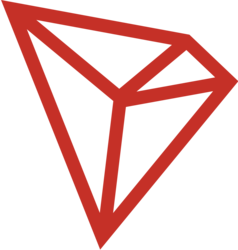Blockchain and AI: Pioneering the Path to Ethical AI Development
In today’s fast-evolving technological landscape, the convergence of blockchain and artificial intelligence (AI) has ignited fervent discussions about the prospects of creating safe and ethical AI. While this intersection, often referred to as “crypto-meets-AI,” has garnered significant attention, it remains an enigma to many. In this article, we delve into the practicality of combining blockchain and AI and explore how this fusion can contribute to the development of ethical and secure AI.
The Long-standing Love Affair with AI
Trent McConaghy’s lifelong fascination with AI traces back to his early days on a Canadian pig farm. Gifted a computer in the 1980s, McConaghy delved into coding and embarked on a journey that eventually led him to the world of AI. His dedication remained steadfast even as blockchain technology gained prominence in 2013. McConaghy’s project, Ocean Protocol, is just one example of a growing number of startups that aim to harness blockchain’s potential to enhance AI.
However, the idea of “crypto-meets-AI” often appears vague and abstract, mostly stemming from the Web3 community’s optimism. This enthusiasm is notably one-sided, with the AI camp maintaining a more cautious stance. Skeptics argue that merely sprinkling blockchain “fairy dust” on AI won’t solve the complex challenges they present.
The Confluence of Web3 and Ethical AI
To truly grasp how Web3 can assist in the development of safe and ethical AI, we must explore two vital areas: data and compute.
Data forms the backbone of any AI model. Ensuring high-quality, bias-free data is a formidable challenge. Blockchain technology has the potential to address these concerns by offering robust copyright protection and enabling data audits. It could also incentivize individuals to contribute their personal data while preserving privacy, unlocking the “long tail of data.”
Ali Yahya of Andreessen Horowitz highlights this concept and emphasizes that Web3 is essential for harnessing untapped data sources. Traditionally, data collection has followed a top-down approach, but Web3 envisions a more inclusive, bottom-up model where ordinary individuals contribute data, sparking network effects.
The Road to Practical Implementation
Realizing these visions is no simple task. Building the infrastructure to facilitate these interactions is an arduous journey that requires overcoming various challenges. Ocean Protocol and similar projects have grappled with issues of data ownership, user control, privacy, regulation, and decentralization for years.
The integration of AI into this framework adds complexity. Computation, essential for training AI models, relies on semiconductor chips. Current chip shortages may intensify with the growing demand for AI processing power. Projects like Gensyn aim to address this issue by creating a decentralized network where users contribute idle computing power to train AI models.
However, verification poses a formidable obstacle in such decentralized systems. Ensuring the integrity of AI training data, which is constantly evolving, demands a sophisticated approach, such as Zero-Knowledge Proofs.
The Role of Blockchain: Cryptography or Cryptocurrency?
A pertinent question arises: Is blockchain indispensable for achieving these goals? While some argue that blockchain’s cryptographic capabilities are essential for creating decentralized incentives and resource marketplaces, others believe that the benefits of cryptography can be harnessed without blockchain.
Blockchain may not be the sole solution, as many open-source AI initiatives remain indifferent to tokens or cryptocurrency. Furthermore, the dark side of cryptocurrencies, marked by scams and phishing attacks, raises concerns when intertwined with AI systems.
The Journey Towards Ethical AI: A Long Road Ahead
In conclusion, while the marriage of blockchain and AI holds great promise, the road to practical implementation remains challenging. Technical infrastructure, timing, and user experience all pose significant hurdles. The decentralized nature of Web3 may add complexity to user interactions, which need to be as seamless as centralized alternatives.
Ultimately, the dream of ethical and secure AI may still be years or even decades away. The battle between regulating AI growth and unleashing AGI capabilities continues. Trent McConaghy’s vision of “Nature 2.0,” where humans augment their intelligence using AI, represents a fascinating, albeit speculative, future.
Blockchain could play a role in preserving privacy and ownership in this brave new world. However, the future of blockchain and AI remains shrouded in uncertainty, with the technical solutions required likely to take time to develop.
In this era of rapid technological evolution, the confluence of blockchain and AI holds the potential to reshape our world. While the challenges are formidable, the pursuit of safe and ethical AI remains a noble endeavor, and the fusion of blockchain and AI may hold the key to achieving it.





























